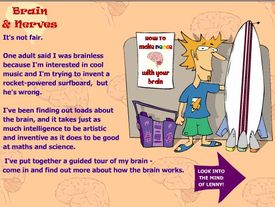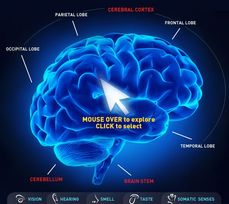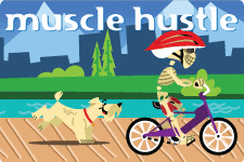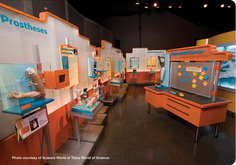|
CHAPTER 4
|
CHAPTER 5
|
CHAPTER 6
|
CHAPTER 7
LESSON 13
NERVOUS SYSTEM INTERACTION |
GRADE 5 LIFE SCIENCE - HUMAN BODY SYSTEMS
Lesson 13 - How Your Nervous System Interacts with other systems and Review
MULTIMEDIA CONNECTIONS
Before You Read
We have learned about the Nervous System and how it delivers signals to and from the brain - much like one way train tracks. Let's just do a quick review in the first video. Then we'll take a closer look at the main station that controls it all - The Brain!
Before You Read
We have learned about the Nervous System and how it delivers signals to and from the brain - much like one way train tracks. Let's just do a quick review in the first video. Then we'll take a closer look at the main station that controls it all - The Brain!
|
|
|

TEXTBOOK CONNECTIONS
Section 7.5 How Your Nervous System Interacts with Other Systems
Key Questions: How does the nervous system interact with other systems in the body?
Open your BC Science Probe 5 Textbook or your iPad to Chapter 7 Nervous System Interaction - page 150
While You Read
Section 7.5 How Your Nervous System Interacts with Other Systems
Key Questions: How does the nervous system interact with other systems in the body?
Open your BC Science Probe 5 Textbook or your iPad to Chapter 7 Nervous System Interaction - page 150
While You Read
- As you read about the nervous system interaction answer the questions on the worksheet Section 7.5 How Your Nervous System Interacts with Other Systems in your Science Duotang.
- After you answer the questions on the worksheet draw a flow chart to show what to do if you needed something to write with and then saw a pencil and pen. Use words and pictures (or a diagram) either on the page or on the computer.
- Complete the Human Body Systems Unscramble and Match in your Science Duotang.
CHAPTER 7 QUIZ
Can you believe we are almost finished the entire Body Systems Unit! Before we move to our next topic it's time to study for the quiz on Chapter 7. Go through your textbook and your notes. You can choose one of four ways to study.
When your study notes are handed in you can complete the Chapter 7 Quiz and then visit the iPad and Dr. Frankenstein (plus any other apps you would like to revisit!)
Can you believe we are almost finished the entire Body Systems Unit! Before we move to our next topic it's time to study for the quiz on Chapter 7. Go through your textbook and your notes. You can choose one of four ways to study.
- Complete the Chapter 7 Review found in your textbook on pages 152-153. Answer the questions in complete sentences and hand in.
- Use the Chapter 7 Review found in your Science Duotang and hand in.
- Use Inspiration or your own drawing to make a mind map of Chapter 7. Be sure to include drawings and definitions and hand in.
- Use file cards to record all important vocabulary words, their definitions and a drawing and hand in.
When your study notes are handed in you can complete the Chapter 7 Quiz and then visit the iPad and Dr. Frankenstein (plus any other apps you would like to revisit!)
ipad connections

Dr. Frankenstein's Body Lab - Learn about five body systems by placing body parts into their proper spots. When you complete all five levels in 20 seconds or less you can build your own monster!
After You Finish - We will wrap up this Unit with a trip to Science World! Here's what we will do...




